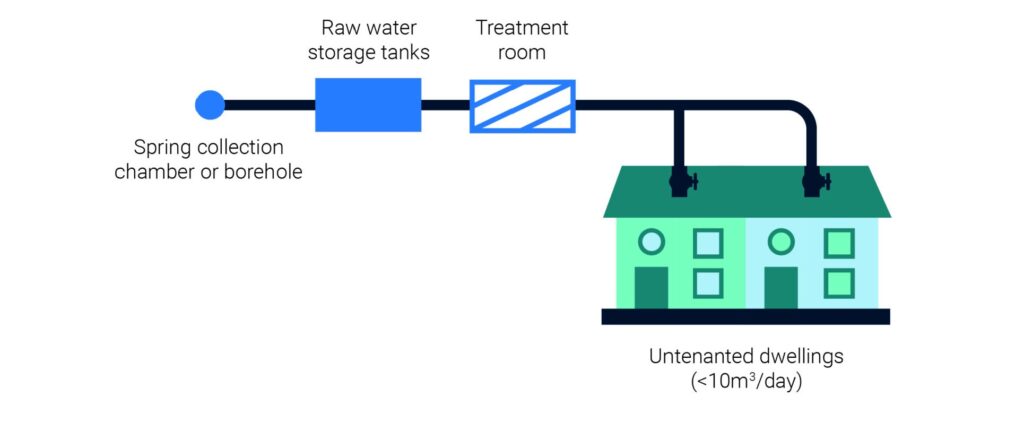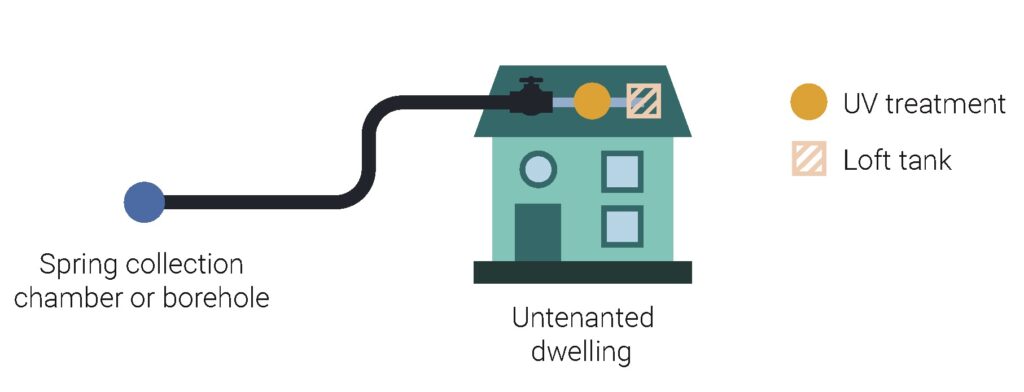Types of private supplies (England)
Under the Private Supplies (England) Regulations, private supplies in England are categorised into three types of supply:
Regulation 8 supplies are those where a water supply is provided by a water company, which is then further distributed by a person other than a water company. These supplies require a risk assessment, which must be reviewed and updated every five years and monitored at a frequency dependent on the outcome of the risk assessment. Local authorities may recover costs for these activities.
Regulation 9 supplies are commercial or public use supplies. They include supplies where the average daily volume of water consumed for domestic purposes is 10 m³ or more per day of water (approximately more than 50 people); or any supply where the water is used as part of a commercial or public activity such as breweries (irrespective of the volume consumed). These supplies require sampling for two groups of parameters at frequencies that are specified in the regulations, based on the volume consumed. The minimum frequency is once a year. A risk assessment must be carried out and reviewed and updated every five years. Local authorities may recover costs for these activities. A regulation 9 supply is depicted in the following schematic (note that all installations will vary):

Regulation 10 supplies are small shared supplies where the water consumed for domestic purposes is less than 10 m³ per day and where no commercial activity (including tenancy agreements) take place. Local authorities must complete a risk assessment and monitor these supplies every five years.

A subset of regulation 10 supplies are those that serve a single premises only. Local authorities may monitor these supplies and must do so if requested to do so by the owner or occupier of that dwelling. Local authorities may recover costs for these activities.

